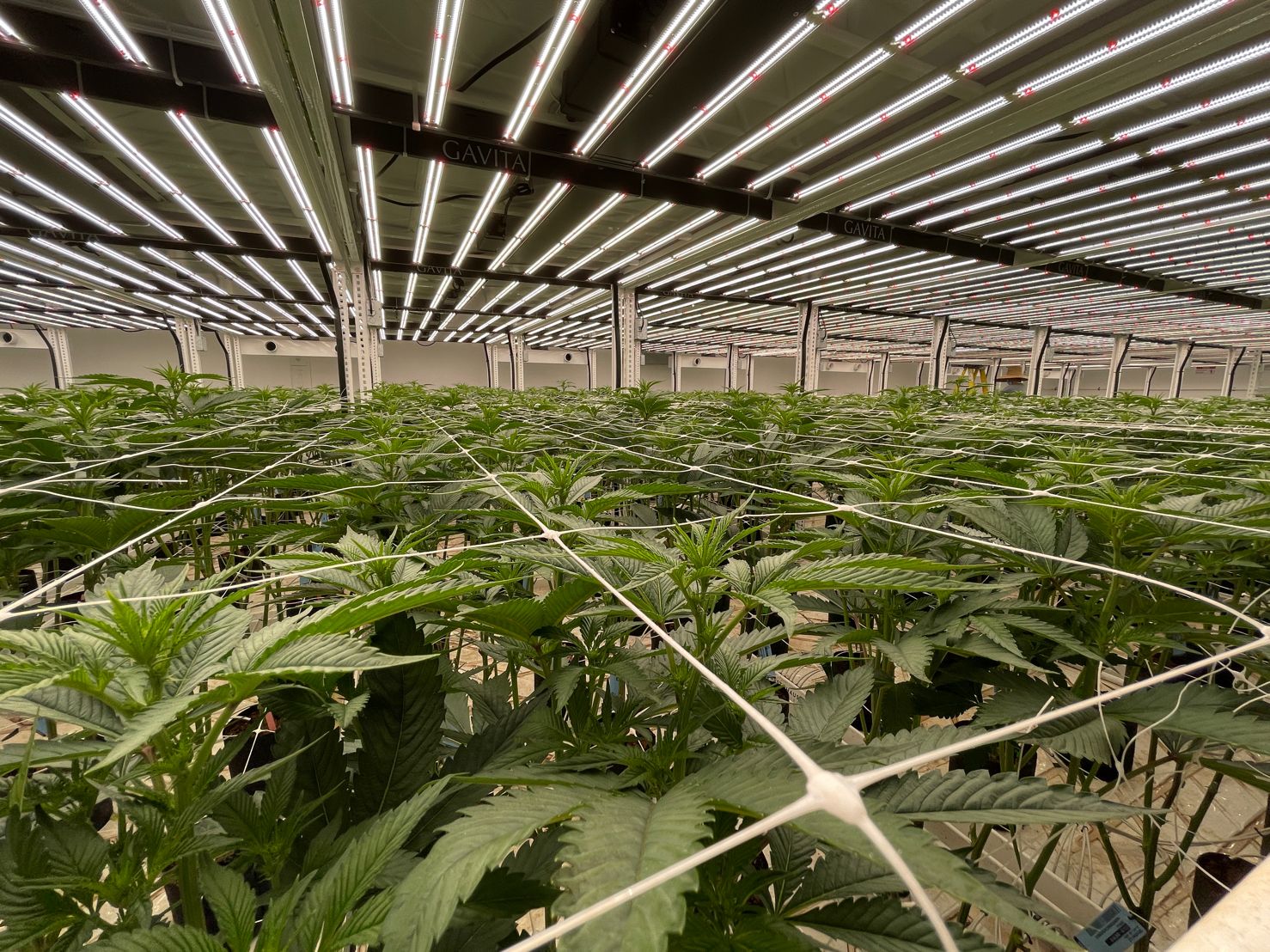Many flowering plants, Cannabis among them, are what are known as “diurnal” plants – they use the cycle between day and night to trigger their growth patterns. This is important to understand when growing plants indoors so that your crop management takes this cycle into account.
There are two phases to the growth of most flowering plants: vegetative and flowering. The vegetating cycle focuses on establishing a solid root system, a strong main trunk, and ample foliage to absorb the light that’s essential to the photosynthetic process. If you’re starting from seed, you can get by with less light intensity until active growth starts; heat is more an issue. Keep the seed bed warm, but not hot, and give enough light to nourish the seedlings without scorching them.
If you’re starting seeds full-spectrum LED grow lights are a good choice because they give all the light needed without overheating concerns. Insufficient light will result in tall plants with long internodes, so don’t use a weak light that causes the seedlings to reach for it, creating “stretch.” LED Panel Plant Grow Light Full Spectrum Commercial Indoor
Once plants are established and in the vegetative phase, they require plenty of light in the right frequencies to stimulate growth. Outdoors, the sun provides more than enough light in all frequencies, but indoors, it’s up to the grower to give plants the quality of light they need. Leafy plants like Cannabis want a good amount of blue and red light in the proper wavelengths for optimal growth and bud production, and while mixing various light sources can approximate it, the simplest and ultimately most economical way is through the use of properly designed full-spectrum LED grow lights such as Aokairuisi LED grow lights featuring the Phyto-Genesis Spectrum. Shop
A lesser known and often overlooked process in plants is what is known as phototropism. It’s the process by which a plant locates its light source and turns toward it to gather the most energy. It’s triggered by blue light, and an insufficient amount will cause the plant to stretch toward the light source and become leggy and weak. This is an important consideration in your choice of lights because high pressure sodium (HPS) lamps don’t emit enough blue light for proper phototropism. You can solve this with metal halide lamps during the vegetative stage, but here again, full-spectrum LED lights eliminate the need to change light sources during the growing cycle, which has other benefits as well.
While Cannabis plants don’t have a “sleep cycle” per se, many growers feel that at least some time in the dark lets them relax and catch up on some other processes that improve plant quality such as root development. At the minimum, Cannabis plants require less than 12 hours of dark to stay in the vegetative cycle, so a good approach is 18 hours on and 6 hours off during vegetation. At the very least, it will save considerably on energy used for lighting and ventilation with very little effect on plant growth.
The flowering phase in Cannabis is triggered by the light/dark cycle. It is started by changing your cycle to 12 hours on and 12 hours off. During this phase, the plants will continue to grow vigorously and require even more light because of their size. Some growers switch to HPS at this time because the plants need more red light than they did previously, but with full-spectrum LED grow lights, the need to change sources is eliminated, saving grow light time, bother, and money as well as the need to control the large amount of heat produced by HPS lamps.
Rather than bogging down in botany, keep your growing simple by following three guidelines: use full-spectrum LED grow lights for all cycles, keep them on at least 18 hours during vegetative growth, and cut back to 12 on and 12 off for flowering. Then sit back and enjoy your harvest.

